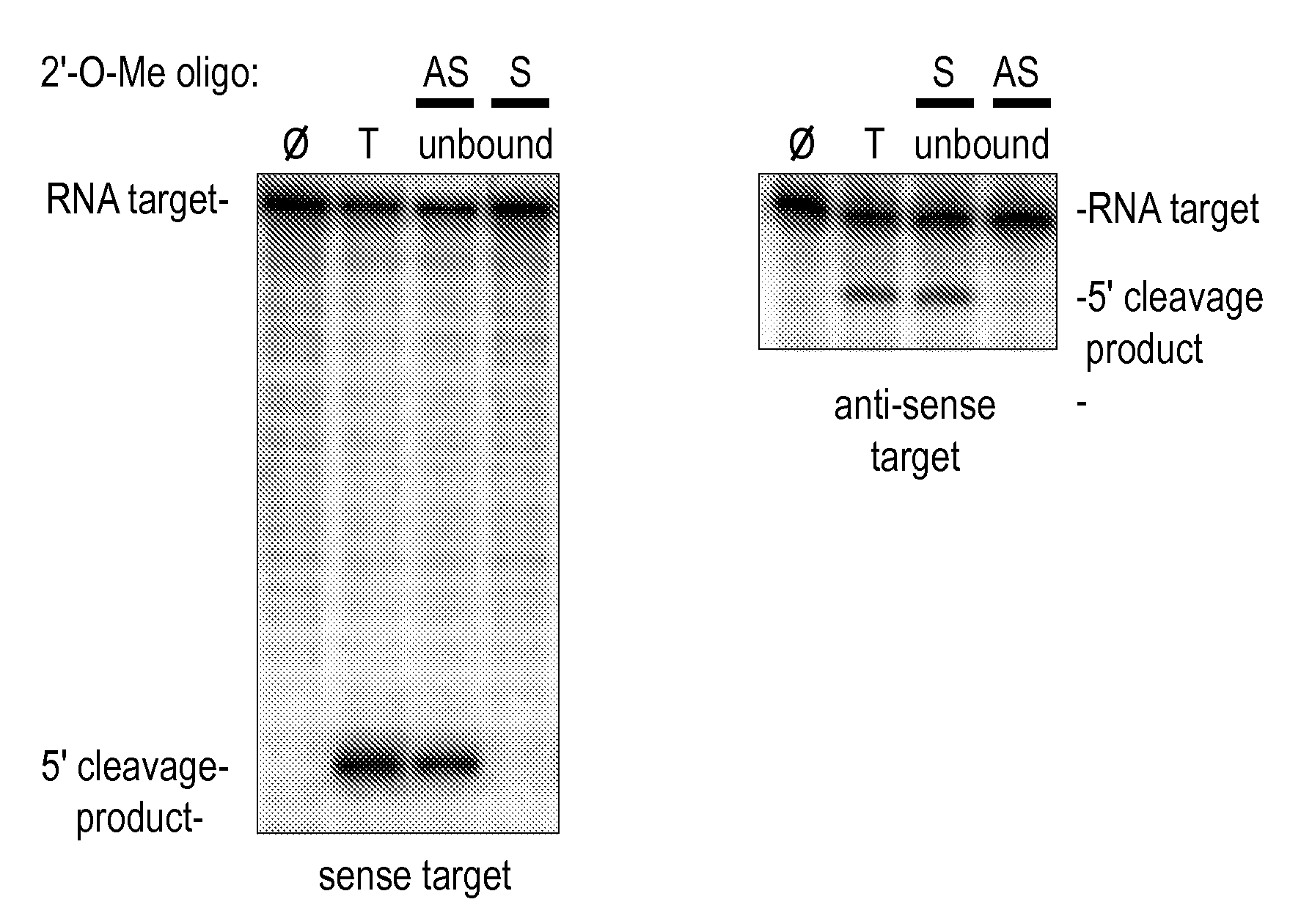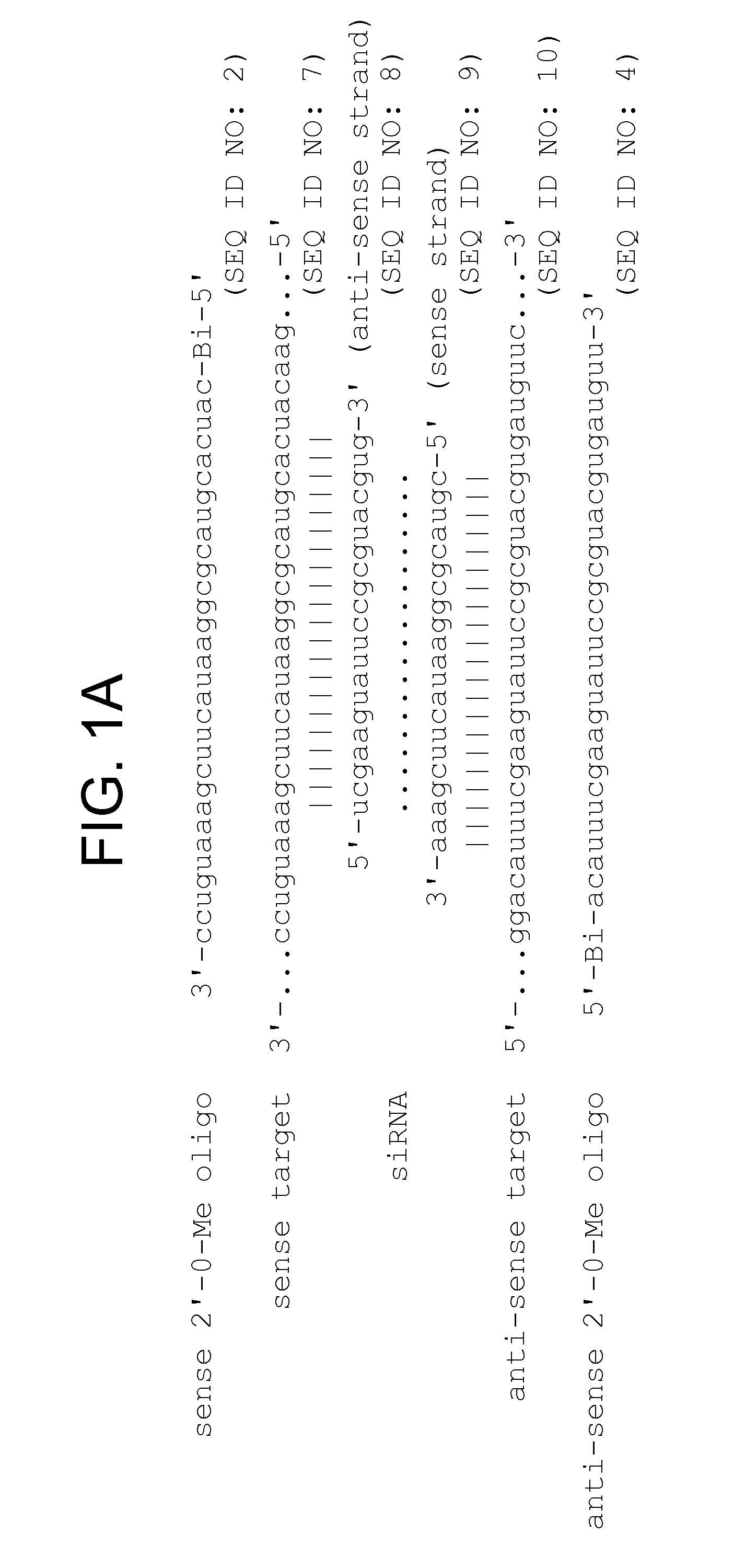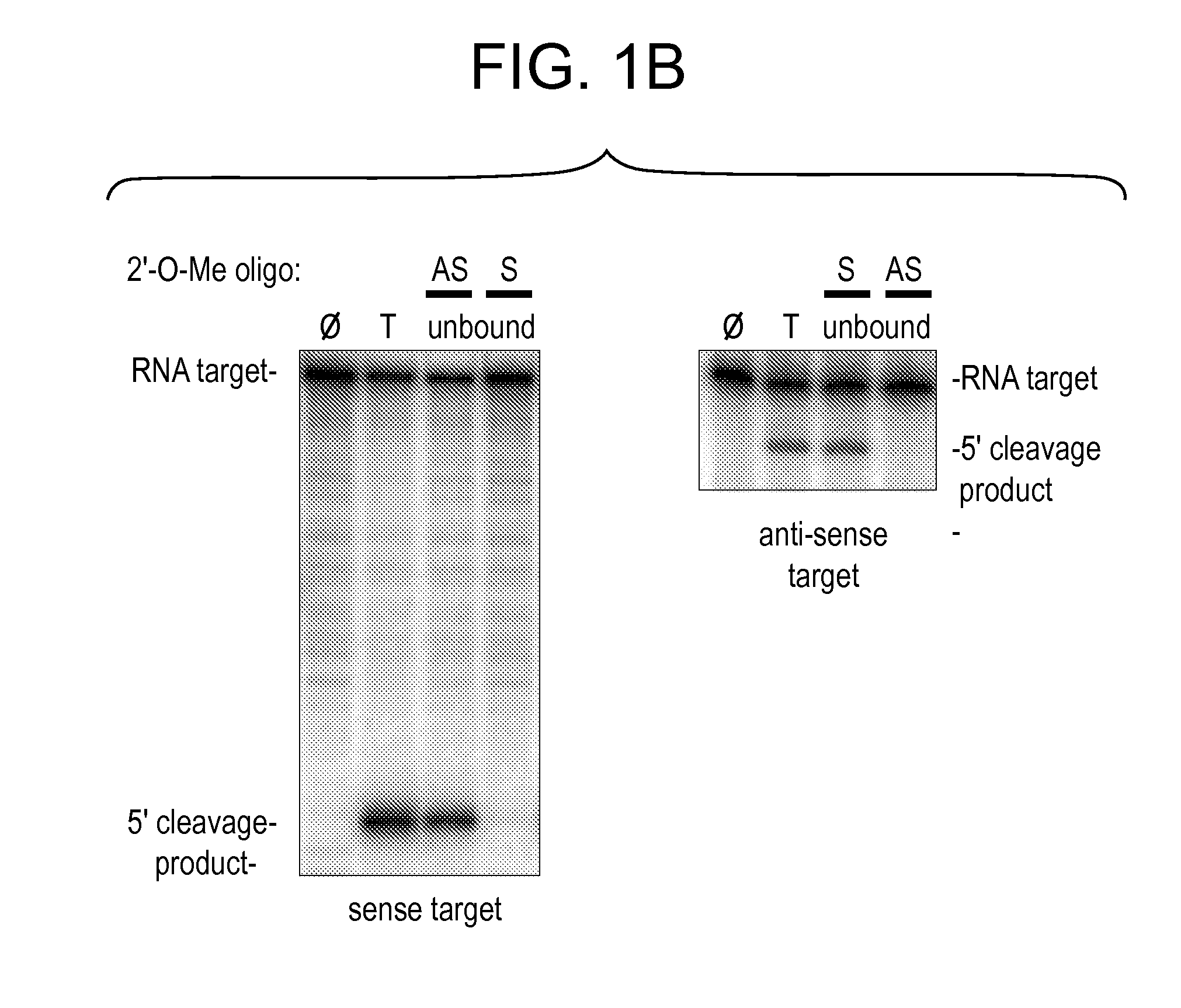Sequence-specific inhibition of small RNA function
a function and sequence-specific technology, applied in the field of sequence-specific inhibition of small rna function, can solve the problems of unfavorable understanding of the mechanisms by which these processes occur
- Summary
- Abstract
- Description
- Claims
- Application Information
AI Technical Summary
Benefits of technology
Problems solved by technology
Method used
Image
Examples
example 1
Inhibition of RNAi by 2′-O-methyl Oligonucleotides
[0331]Although RNAi has proved a straightforward and cost-effective method to assess the function of protein-coding mRNAs (Fire et al., 1998; Caplen et al., 2000; Caplen et al., 2001; Carthew, 2001; Elbashir et al., 2001b) and even some non-coding RNAs (Liang et al., 2003), no comparable method allows the sequence-specific inactivation of the siRNA or miRNA components of the RISC. The invention features such inhibitors. Preferred inhibitors of RISC function are nucleic acid-based molecules that are recognized by the RISC by nucleotide complementarity, but are refractory to RISC-directed endonucleolytic cleavage or translational control. Such molecules are designed such that they are capable of titrating out RISC complexes containing a complementary siRNA or miRNA, but have little or no effect on the function of RISC complexes containing guide RNAs unrelated in sequence. Such RISC inhibitors can further be designed such that they are ...
example 2
Inhibition of RNAi in Cultured Human Cells
[0337]The data presented in Example 1 showed that 2′-O-methyl oligonucleotides were stoichiometric, irreversible, sequence-specific inhibitors of siRNA function in RNAi reactions using Drosophila embryo lysate. To address the question of whether 2′-O-methyl oligonucleotides could block siRNA function in vivo, sequential transfection experiments were performed using 1, 5, 10 or 25 nM siRNA duplex. siRNA was transfected on the first day, then reporter and control plasmids cotransfected together with various amounts of 2′-O-methyl oligonucleotide on the second day. Silencing of Pp-luc, relative to the Rr-luc control was measured on the third day. For each siRNA concentration, the concentration of 2′-O-methyl oligonucleotide required for half-maximal inhibition of RNAi was determined (FIG. 4A-D). Increasing amounts of the 2′-O-methyl oligonucleotide gradually extinguished the ability of the siRNA to silence Pp-Luc in all four experiments. The in...
example 3
Inhibition of miRNA Function In Vitro and In Vivo
[0338]In animal cells, miRNAs are thought predominantly to function as translational regulators. Nonetheless, a growing body of evidence suggests that they function through a similar, if not identical, RISC as siRNAs (Hutvägner and Zamore, 2002; Zeng et al., 2002; Doench et al., 2003; Khvorova et al., 2003; Schwarz et al., 2003; Zeng et al., 2003b). Because 2′-O-methyl oligonucleotides blocked siRNA function in vitro and in cultured human cells, it was asked if these oligonucleotides might likewise disrupt the function of a specific miRNA in vitro and in vivo. An ideal candidate for such an miRNA is let-7. Classical genetic mutations in C. elegans let-7 produce well characterized, readily scored phenotypes. Furthermore, human HeLa cells express multiple let-7 family members (Rfam Accession numbers MI0000060-MI0000068, MI0000433 and MI0000434), and endogenous let-7 is present naturally in RISC (Hutvägner and Zamore, 2002; Zeng and Cull...
PUM
| Property | Measurement | Unit |
|---|---|---|
| pH | aaaaa | aaaaa |
| pH | aaaaa | aaaaa |
| Tm | aaaaa | aaaaa |
Abstract
Description
Claims
Application Information
 Login to View More
Login to View More - R&D
- Intellectual Property
- Life Sciences
- Materials
- Tech Scout
- Unparalleled Data Quality
- Higher Quality Content
- 60% Fewer Hallucinations
Browse by: Latest US Patents, China's latest patents, Technical Efficacy Thesaurus, Application Domain, Technology Topic, Popular Technical Reports.
© 2025 PatSnap. All rights reserved.Legal|Privacy policy|Modern Slavery Act Transparency Statement|Sitemap|About US| Contact US: help@patsnap.com



